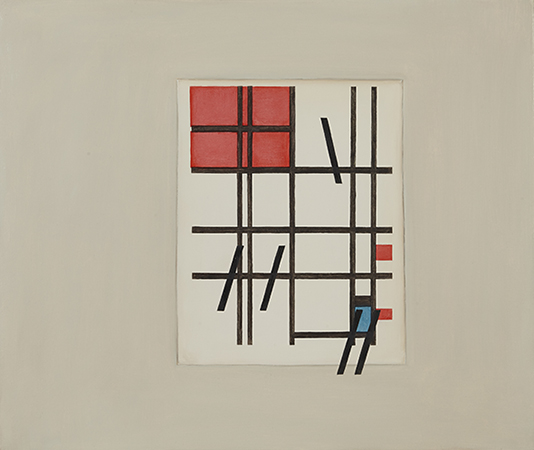June 8–28, 2017
Jane Lombard Gallery
518 W 19th St
New York, NY 10011
Opening: Thursday, June 8, 6–8pm, reception & live painting performance by Enrico Isamu Oyama and ice sculpture by Simone Douglas
Artists: Richard Artschwager, Henri Chopin, Simone Douglas, Guy Laramée, Jen Mazza, Kristin McIver, Enrico Isamu Ōyama, Michael Rakowitz, Karen Schiff, Sophie Tottie
Curated by Melissa Bianca Amore & William Stover
Jane Lombard Gallery is pleased to present Sites of Knowledge, a group exhibition curated by the collaborative Re-Sited. The artists, through various mediums, examine the function of the “symbol” and language per se as their primary apparatus. In many ways, these artists return to ideologies and techniques once employed by the concrete poets, using linguistic fragments or elements as structural visual form and typographical aesthetic.
Renowned American artist Richard Artschwager sculpted words and translated perceptions into tangible objects, recontextualizing everyday objects, and creating new forms from traditional visual representations of language. The exclamation point featured in the exhibition represents the arbitrary relationship between form and meaning, and reinforces the artist’s dedication to playfully challenging the preconceived associations in language.
French avant-garde pioneer of concrete and sound poetry Henri Chopin’s series of typewriter poems—or dactylopoèmes—represent the possibilities and significance of conveying meaning through visual symmetries, employing text as a concept to be experienced rather than comprehended. During the 1950s, Chopin began experimenting with everyday sounds by recording vibrations and basic movements, creating a series of sound shapes that investigate the psychological relationship between sound and object.
Australian-born artist Simone Douglas’s investigates the making of “culture” as a living history and the creation of “language.” Douglas’s work represents the disappearance of oral traditions, storytelling, and the dissolving nature of history and culture. During the opening, the sculpture transitions from ice to water in a symbolic gesture referencing the disappearance of oral histories and culture as the site of language.
French-Canadian artist Guy Laramée retraces the disappearance of the written word by carving and cutting directly into old books, creating new topographical landscapes from discarded pages. The Grand Library features 80 books from Encyclopedia Britannica, challenging the foundation of knowledge, the work becoming a new “site” of knowledge.
Jen Mazza’s paintings explore the translation of ideas and knowledge between languages and from one form to another, as well as what is gained or lost in the process. Mazza sees formal parallels between painting and the book, explaining that “the process of creating the paintings is also a dialogue with form and ideas…each image begins as a near abstraction, the book is reduced to its rectangular form placed so as to be somewhat antagonistic to its support, with images and text only appearing later in the process.”
Kristin McIver examines the vocabulary of social media and the ways in which technology has reshaped the mode of exchange and the employment of language. McIver proposes that ideologies served to consumers through traditional and social media, empowered by advancing technologies and driven by market forces, become referents for new models of self-representation. Her work Indebted to you charts the US national debt figure, recorded at the same time of day over a period of 40 days.
Japanese-Italian artist Enrico Isamu Ōyama is inspired by graffiti, particularly the stylized letters of the writer’s “tag.” Removing the letter shapes, Oyama keeps only the flowing line, repeating it to create an abstract motif or a purely visual object. Oyama examines the psychology of attaching “a name” to something or someone, and the significance of language as the foundation of identity and ego.
Using stone quarried from the ruins of a 6th century sandstone Buddha destroyed by the Taliban in 2001, Michael Rakowitz, with help from Afghani and Italian stone carvers, remade books from the State Library of Hesse-Kassel that were destroyed during bombing by the British Royal Air Force in World War II. For Rakowitz, the work underscores the notion that while the physical can be destroyed, beliefs, ideas, and knowledge can never be eliminated.
Karen Schiff is an artist and wordsmith who combines visual and verbal into new configurations. Schiff’s drawings, paintings, installations, videos, and performances play with sensory dimensions of language and haptic experiences of space. Her Agnes Martin Obituary Project drawings are not just homage but a “thank-you letter” to the woman who has been a major motivating factor in her work.
Swedish-born artist Sophie Tottie reveals physical space between things, examining the line as spatial demarcation, thinking apparatus, and the structural foundation of words and ideas. In Written Language, Tottie illustrates the importance of the line through meticulous repetitive movement, composing a conceptual symphony simply through repetition itself. These works resemble the beginnings of mark making, a place or psychological space that existed prior to comprehension as understood today.
Sites of Knowledge addresses critical ideas about history, authorship and visual structures of knowledge. Indirectly, the curators question how we “look” at knowledge and engage with the complexities of our collective history—both imagined and observed. Knowledge is primarily understood as the basis to knowing, the basis to creating a network of associations and the relationship between memory and history. So, we will continue to ask: what is the “site” of knowledge?
